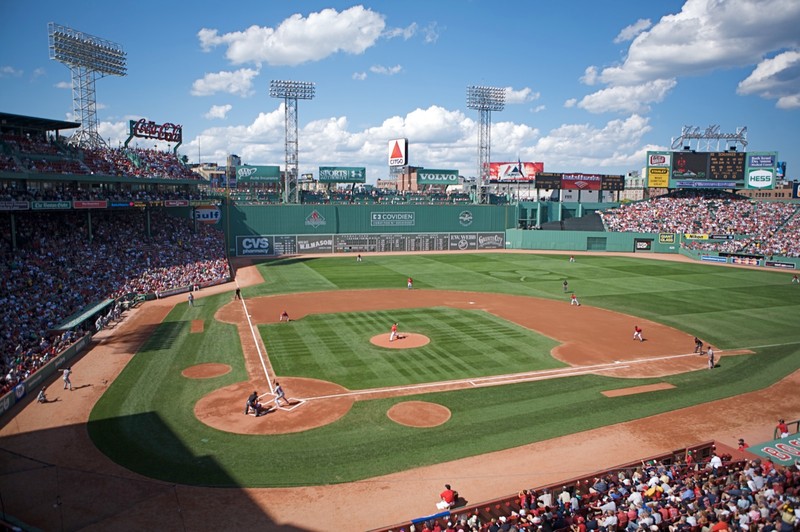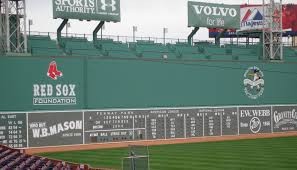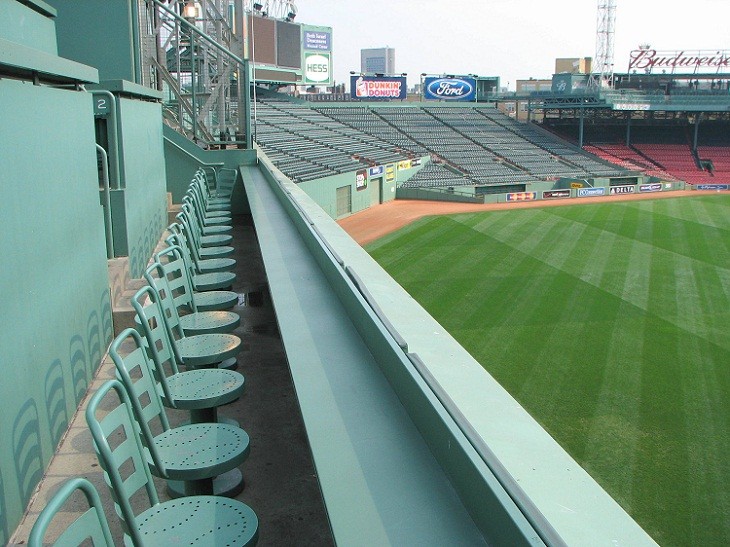Fenway Park
Introduction
Text-to-speech Audio
Images
Fenway from Legend's Box.

Famous "Big Green Monster" - thirty-seven foot, two-inch (11.33 m) high left field wall at Fenway Park. The wall was part of the original ballpark construction of 1912. Photo by Aidan Siegel.

Seats atop the "Green Monster". A new seating section atop the wall with seats for 274 fans (the seats were added in 2002–2003). Photo by Bernard Gagnon.

Backstory and Context
Text-to-speech Audio
Built during the “Golden Age of Ballparks,” the Fenway Park is the nation’s oldest operating major-league baseball stadium. Fenway Park has long been the home of the Boston Red Sox. Construction of the stadium began on September 25, 1911. The ballpark opened seven months later with a seating capacity of 24,400. Boston mayor John Francis “Honey Fitz” Fitzgerald threw the ceremonial first pitch of the first official game on April 20, 1912, before a crowd of 27,000. Over the years, Fenway Park has been associated with a number of significant major league baseball players, including Ted Williams and Babe Ruth. In their first year at Fenway Park, the Red Sox won the 1912 World Series.
The first significant renovation of Fenway Park took place in 1934 under the ownership of Thomas Yawkey; costing an estimated $1.25 million, the project enlarged the grandstand and replaced wooden bleachers with concrete and steel structures. The Red Sox and Fenway Park were acquired in 2002 by New England Sports Ventures, the first change in ownership in 68 years, ending the Yawkey era. The new ownership was open to the possibility of preserving the ballpark, and elected to take on a ten-year improvement program.
The exterior elevations of the structure were originally designed by James E. McLaughlin and constructed of red brick with cast-stone trim; within the exterior walls, the structure, including the original stands and subsequent 1933-34 expansion, was designed by Osborne Engineering, Cleveland, Ohio’s oldest civil engineering firm and one of the nation’s foremost designers of major league, municipal, and collegiate stadiums and ballparks.
Although Fenway Park is the oldest ballpark in Major League Baseball, it is one of America's finest. The tradition rich atmosphere outside of Fenway Park before games is truly unique and cannot be found anywhere else. Yawkey Way is closed prior to every game so fans can mingle and enjoy live music, food, and the company of other Red Sox fans outside Fenway Park. Inside, Fenway Park's interior is full of character with its small seating capacity, the Green Monster and non-electronic scoreboard in left field, the lone red seat in right field where the longest homerun ever hit, 502 feet by Ted Williams, and the retired numbers of Red Sox legends on the right field facade.
Also, the Red Sox have been one of the best teams in Major League Baseball over the past decade winning three World Series Championships in 2004, 2007 and 2013. The 2013 World Series was even more special to Red Sox fans as the team clinched the championship at Fenway Park for the first time since 1918.
